The ultimate OSINT toolkit is no longer just a wish list for cyber sleuths—it’s a practical necessity for anyone who wants to investigate, verify, and report in the digital world of 2025. Open-source intelligence (OSINT) isn’t just for large organizations or professional investigators anymore. Journalists, security teams, and even curious individuals rely on OSINT workflows to uncover connections, expose risks, and make sense of a noisy internet.
The landscape is evolving faster than ever. AI-driven search, automation, privacy-first tools, dark web sources, and a wave of new API-based services have changed the game for everyone—from red-teamers to journalists. What worked yesterday might be outdated today. That’s why your OSINT toolkit must be agile, future-proof, and legally sound.
In this guide, you’ll get a field-tested, up-to-date overview of the must-have OSINT tools by category—from people search and email reconnaissance to web and network mapping. We’ll break down the essentials, share practical examples, and help you build a toolkit that keeps you ahead of the curve in 2025—with real advice you can actually use.
Whether you’re just starting in open-source intelligence or refining a battle-tested workflow, this post will help you choose, combine, and use the very best that OSINT has to offer—ethically, effectively, and efficiently.
Core Principles for Selecting OSINT Tools
Choosing the right OSINT tools in 2025 isn’t about grabbing every shiny new app—it’s about picking the solutions that fit your workflow, respect your privacy, and help you work both efficiently and ethically. Here are the guiding principles for assembling a toolkit that stands the test of time:
Open Source vs. Commercial Solutions
Open source OSINT tools are often free, auditable, and rapidly improved by the community. They’re perfect for experimentation, transparency, and custom workflows. Commercial tools, on the other hand, usually offer polished user experiences, broader integrations, and technical support. The best investigators mix both, balancing flexibility with reliability. Know your budget and risk tolerance—and remember that sometimes, the open source tool is the gold standard.
Privacy, Ethics, and Legal Considerations
Every tool in your kit should help you operate responsibly. Privacy is critical: always prefer tools that let you keep searches local and limit the exposure of sensitive data. Ethical OSINT means knowing what you can do legally—and what you should do. Never target individuals or data sources without permission, and always abide by the laws in your region. The right toolkit enables you to work transparently and defensibly.
Automation, Speed, and Integration
Time is precious in OSINT. Choose tools that let you automate repetitive searches, batch-process data, and integrate seamlessly with other apps or scripts. Speed matters: local tools and API-based solutions often outperform web UIs, especially for large investigations. The modern OSINT pro combines point-and-click tools with command-line utilities and custom workflows for maximum efficiency.
Modularity & Adaptability
No two OSINT investigations are the same—and your toolkit should reflect that. Look for tools you can mix, match, and swap out as needed. Modular toolkits mean you’re not locked into one vendor or approach. Build your core with a few essentials, and always be ready to adapt as new challenges and data sources emerge. Your toolkit is a living system—keep it agile, and you’ll stay ahead.
🔎 OSINT Toolkit Golden Rules:
- Mix and match: Combine open source and commercial tools for best results.
- Prioritize privacy: Favor local search and data minimization.
- Stay ethical: Know your boundaries—only use legal methods.
- Automate when possible: Batch, script, and integrate to save time.
- Stay modular: Build a toolkit you can update as new challenges arise.
Essential Tool Categories for OSINT in 2025
The world of OSINT is vast and fast-moving—no single app can cover it all. The best investigators build workflows from a toolkit of specialized solutions, each focused on a different open-source intelligence challenge.
Whether you’re tracking identities, uncovering exposed credentials, mapping technical infrastructure, or analyzing digital files, the key is knowing which type of tool is right for the task.
Here are the core OSINT tool categories every investigator should master in 2025:
- People & Identity Search:
Uncover real-world identities behind usernames, phone numbers, or email addresses using public records, people search platforms, and breach data. - Email Recon:
Discover where an email address is registered, which services it’s tied to, and any associated accounts or breach exposures. - Social Media OSINT:
Dive deep into Facebook, LinkedIn, Twitter/X, forums, and other platforms to map connections, activities, and hidden details. - Breach & Leak Analysis:
Search for compromised credentials, leaked databases, and password dumps to reveal exposed accounts and digital risks. - Web Recon:
Analyze websites for hidden content, scan for vulnerabilities, map subdomains, and fingerprint target infrastructure. - Infrastructure & Domain Recon:
Research domains, WHOIS records, subdomains, DNS, IP addresses, and connections between digital assets. - Network Recon:
Explore Wi-Fi networks, scan IP ranges, and uncover publicly accessible devices and services. - File, Image & Metadata Analysis:
Extract hidden data and context from documents, images, PDFs, and media using metadata and forensic tools. - Automation & Scripting:
Leverage Python, Bash, and specialized frameworks to automate repetitive searches, process large data sets, and chain tools together. - Visualization & Mind Mapping:
Chart relationships, create timelines, and report findings using visual mapping and reporting tools.
Each category is critical to modern investigations. In the sections that follow, we’ll break down the best tools in each category and show how they fit together in a practical, field-tested OSINT workflow.
| Category | What It Covers |
|---|---|
| People & Identity Search | Find real-world identities behind usernames, phone numbers, and emails. |
| Email Recon | Map digital footprints from email addresses across services and breaches. |
| Social Media OSINT | Investigate social profiles, connections, and activities on major platforms. |
| Breach & Leak Analysis | Discover compromised accounts, leaked credentials, and data exposures. |
| Web Recon | Analyze websites, scan for hidden content, vulnerabilities, and map infrastructure. |
| Infrastructure & Domain Recon | Research domains, WHOIS, DNS, IPs, and relationships between digital assets. |
| Network Recon | Map Wi-Fi, scan IP ranges, and uncover public devices and services. |
| File, Image & Metadata Analysis | Extract and analyze data from docs, images, and files for hidden clues. |
| Automation & Scripting | Automate investigations, bulk process data, and link multiple tools. |
| Visualization & Mind Mapping | Map connections, chart timelines, and visually report findings. |
Up next, we’ll break down the standout tools in each category, show what makes them powerful, and help you choose the right mix for your OSINT investigations.
🔬 How to Evaluate OSINT Tools in Every Category:
- Coverage: Does the tool support your target region, language, or platform?
- Accuracy: How reliable are its results compared to other tools or manual checks?
- Speed & Scale: Can it handle bulk lookups or automation without lag or blocking?
- Privacy: Are your searches stored, logged, or visible to the service provider?
- Cost: Is it free, paid, or “freemium” with critical limits? Is the value worth the price?
- Integrations: Does it work well with your existing workflow—APIs, exports, scripting?
- Legal/Ethical Fit: Are you allowed to use the tool in your region and for your use case?
Take 2 minutes to ask these questions before adding a new tool to your OSINT arsenal!
👤 Category Deep Dive: People Search
Finding real identities behind usernames, phone numbers, or email addresses is one of the most common—and challenging—tasks in OSINT. Modern people search tools combine public records, social networks, user-generated data, and sometimes breach data to build rich, actionable profiles.

Top People Search Tools for 2025
- Sync.me – A go-to service for reverse phone lookups and caller ID worldwide. Sync.me taps into crowdsourced address books and open data to reveal names, photos, and even social profiles connected to phone numbers.Why it’s great: Excellent for identifying unknown callers, verifying leads, and linking numbers to social accounts.
- Truecaller – Another giant in phone number intelligence, Truecaller provides caller ID, spam warnings, and crowdsourced contact data. It’s especially strong for mobile numbers outside North America and Europe.Why it’s great: Fast, global, and often reveals names and user-uploaded photos others miss.
- Pipl – A commercial people search powerhouse, Pipl delivers deep searches across social media, public records, breach data, and more. While Pipl is paid, its results are unmatched for corporate, law enforcement, and high-stakes investigations.Why it’s great: Combines structured and unstructured data to map identities across the globe.
Pro Tip: Always cross-check results from multiple tools—people data can be out of date, and each platform has its blind spots. Respect privacy and legal boundaries, especially with paid data aggregators.
✉️ Category Deep Dive: Email Recon
Email addresses are the keys to a vast amount of online intelligence. With the right tools, you can discover where an email is registered, which social media accounts it’s tied to, and even whether it’s been exposed in breaches or public data dumps. Email recon is a cornerstone of both people investigations and infrastructure mapping in OSINT.
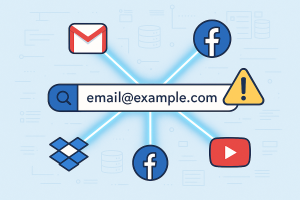
Top Email Recon Tools for 2025
- Holehe
This open-source tool automates checking whether an email address is registered on 100+ online services, from social media to retail. It’s fast, scriptable, and keeps your queries private by minimizing external exposure.
Why it’s great: Excellent for quickly mapping a person’s digital footprint and finding hidden accounts.
- GHunt
GHunt specializes in digging deep into Google accounts. It can extract public information, linked services, YouTube channels, Google Maps reviews, and more, just from an email address.
Why it’s great: Unmatched for Google ecosystem research and correlation.
- Toutatis
A newer but fast-rising tool, Toutatis checks for registration and information leaks across popular online platforms, and can be automated for bulk investigations.
Why it’s great: Effective at discovering presence on lesser-known or international sites.
Pro Tip: Pair email recon tools with breach search tools (see our Local Breach Starter Pack) to immediately see if an address is compromised—and on which sites.
📱 Social Media OSINT
Social media platforms are goldmines for open-source intelligence, offering unique insight into targets’ networks, interests, routines, and online behavior. The best social OSINT tools automate profile discovery, content archiving, connection mapping, and deep searches across multiple platforms—revealing much more than a simple search bar ever could.

Top Social Media OSINT Tools
- Maigret
Quickly scans 500+ social networks for a username, finding accounts on both major and obscure sites. Supports profile analysis and quick reporting.
Why it’s great: Unmatched breadth for username discovery across global platforms.
Visit Maigret on GitHub - Holehe
Not just for emails—Holehe also supports username and email discovery on dozens of social networks and web apps.
Why it’s great: Fast, private, and easy to automate for broad social checks.
Visit Holehe on GitHub - SpiderFoot
An automation platform for OSINT, SpiderFoot excels at mapping social media footprints, connections, and breaches alongside broader data sources.
Why it’s great: Automated deep scanning across hundreds of platforms, with visualization.
Visit SpiderFoot - SocioSpy/Social-Analyzer
These tools focus on social media analysis and reporting, supporting everything from profile archiving to post discovery.
Why it’s great: Flexible, scriptable, and easy to use for rapid profile reviews.
Visit Social Analyzer on GitHub
Pro Tip: Save time and capture evidence with archiving tools like archive.ph or Browsertrix Crawler—useful when content might disappear or be edited.
🛡️ Breach & Leak Analysis
Data breaches and leaks are an OSINT goldmine—revealing usernames, emails, passwords, and more from past exposures. Investigators use breach and leak analysis tools to search for compromised accounts, verify credentials, and connect digital identities through leaked data. Whether you’re tracking a known breach or exploring massive credential dumps, these tools can give you the edge.
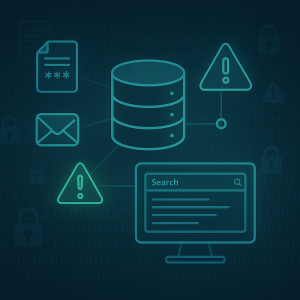
Top Breach & Leak Analysis Tools
- Have I Been Pwned (HIBP)
The essential public service for checking if an email or password appears in known breaches. Offers a web search, API access, and regularly updated breach data.
Why it’s great: Fast, global, and easy for both one-off and bulk queries.
Visit Have I Been Pwned - RockYou / RockYou2021
Massive password lists commonly used in password audits, recovery, and credential stuffing investigations. Essential for password reuse and brute-force research.
Why it’s great: Still the most realistic source for testing common passwords.
Learn about RockYou - Exploit.in / Anti-Public Combo List
Mega-dumps of email and password combinations collected from hundreds of breaches. Useful for finding old credentials and tracking digital footprints.
Why it’s great: Massive, searchable, and useful for quick credential pivots.
Anti-Public Combo List Info - Dehashed
A commercial search engine for breached data, with advanced search filters and up-to-date results. Supports usernames, emails, domains, IPs, and more.
Why it’s great: Fast, deep, and ideal for professionals needing continuous breach monitoring.
Visit Dehashed - ripgrep (rg)
A lightning-fast command-line search tool that can instantly scan gigabytes of breach dumps for target emails, passwords, or domains—essential for local investigations.
Why it’s great: Speed, flexibility, and total privacy—your breach searches never leave your machine.
Visit ripgrep on GitHub
Pro Tip: For sensitive or private investigations, keep your breach data and searches local—tools like ripgrep let you scan huge data sets without ever uploading target info to a third party.
🌐 Web Recon
Websites are treasure troves of intelligence—from hidden directories and forgotten admin panels to subdomains and technical fingerprints. Web recon tools let you analyze targets, map infrastructure, and discover vulnerabilities or interesting assets that aren’t obvious on the surface.
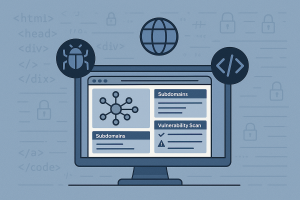
Top Web Recon Tools for 2025
- Caido
A modern, user-friendly web application security platform, Caido is perfect for OSINT, penetration testing, and traffic interception. With features like crawling, proxying, and vulnerability analysis, it’s a next-gen alternative to legacy scanners.
Why it’s great: Sleek UI, lightning-fast, and ideal for mapping websites in detail.
Visit Caido - OWASP ZAP
The classic open-source scanner for web vulnerabilities, ZAP is perfect for both automation and manual analysis. It’s extensible, scriptable, and trusted by thousands of security pros.
Why it’s great: Free, powerful, and packed with features for scanning and fuzzing.
Visit OWASP ZAP - Burp Suite
The gold standard in professional web app security testing. While best known for its penetration testing prowess, Burp Suite is also incredibly useful for OSINT, thanks to its proxying, crawling, and rich extension ecosystem.
Why it’s great: The choice of pros, with deep analysis, robust automation, and unrivaled extensibility.
Visit Burp Suite
Pro Tip: Use a combination of these tools for the best coverage—what one scanner misses, another may reveal. Always get legal authorization before probing websites that aren’t yours!
🏢 Infrastructure & Domain Recon
Investigating the digital infrastructure of a target—domains, subdomains, DNS records, and related assets—uncovers the backbone of online organizations. Infrastructure & domain recon tools help map digital property, reveal linked assets, and often surface overlooked servers, legacy sites, and new attack surfaces.
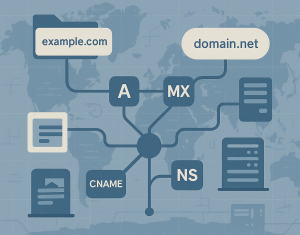
Top Infrastructure & Domain Recon Tools
- SecurityTrails
SecurityTrails provides comprehensive data on domains, subdomains, DNS records, and historical IP changes. It’s a favorite for mapping organizations and tracking infrastructure shifts.
Why it’s great: Intuitive interface, powerful API, and deep data history.
Visit SecurityTrails - Amass
The open-source standard for automated asset discovery, Amass enumerates subdomains, finds related domains, and links infrastructure through passive and active reconnaissance.
Why it’s great: Automation, depth, and integration with other recon tools.
Visit Amass on GitHub - WHOISXMLAPI
Commercial APIs for WHOIS lookups, DNS data, domain history, and reverse IP searching. Trusted by enterprise and law enforcement teams.
Why it’s great: Massive coverage, reliable enrichment, and bulk searching.
Visit WHOISXMLAPI - crt.sh
A public resource for searching Certificate Transparency logs. Find every SSL/TLS certificate ever issued for a domain—revealing hidden subdomains and related assets.
Why it’s great: Fast, free, and simple—great for OSINT and bug bounty hunters.
Visit crt.sh - DNSDumpster
A free online tool for domain mapping and subdomain discovery, visualizing results as network graphs.
Why it’s great: No signup needed, and great for quick mapping and visualization.
Visit DNSDumpster
Pro Tip: Combine passive and active recon for the most complete picture. Use Amass for automation, SecurityTrails for context, and crt.sh to catch what’s missed elsewhere.
📡 Network Recon
The network layer reveals what connects people, devices, and organizations behind the scenes. From Wi-Fi mapping to IP intelligence and IoT asset discovery, network recon tools turn the invisible internet into actionable intelligence.
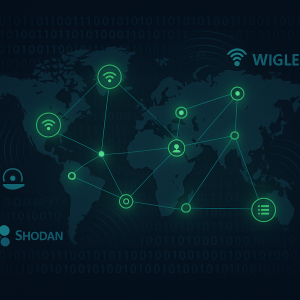
Top Network Recon Tools for 2025
- Wigle
The world’s largest open database of Wi-Fi networks. Wigle lets you search for access points, GPS locations, SSIDs, and even device manufacturers. Essential for tracking wireless activity and mapping physical assets.
Why it’s great: Huge database, mapping features, and a web-based interface.
Visit Wigle - Shodan
The “search engine for the Internet of Things.” Shodan scans the world for publicly accessible devices, servers, webcams, routers, and more. It’s a goldmine for finding open ports, outdated software, and misconfigured hardware.
Why it’s great: Unmatched for asset discovery, vulnerability research, and global mapping.
Visit Shodan - Censys
A cutting-edge platform for scanning and indexing internet-facing assets. Censys collects live data on servers, SSL certs, protocols, and hosts—perfect for large-scale investigations and monitoring.
Why it’s great: Massive coverage, API access, and real-time insights.
Visit Censys
Pro Tip: Combine network recon with breach and web recon tools to paint a complete picture—linking digital infrastructure with people, organizations, and real-world locations.
🖼️ File, Image & Metadata Analysis
Documents and images often carry more secrets than their visible content—hidden metadata, creation details, GPS info, and previous edits can all provide clues. With the right tools, you can extract and analyze these details from photos, PDFs, Office docs, and more, unlocking the hidden context that turns a file into an investigative goldmine.
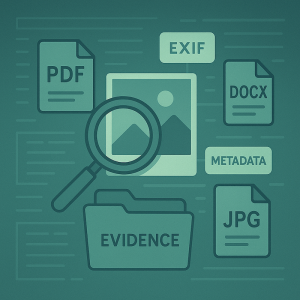
Top File, Image & Metadata Analysis Tools
- ExifTool
The gold standard for extracting metadata from images, videos, PDFs, and many other file types. Supports batch processing and all major OS platforms.
Why it’s great: Reads hundreds of metadata fields, supports automation, and reveals hidden timestamps, camera models, GPS, and more.
Visit ExifTool - Metadata2Go
A simple, free web service for analyzing file metadata online. Upload images, docs, or media files and instantly see metadata fields.
Why it’s great: No install needed—fast and easy checks for quick investigations.
Visit Metadata2Go - PDF-Analyzer
Free and commercial tools for dissecting PDF files—extracting metadata, text, images, scripts, and revision histories.
Why it’s great: Specialized insight into document history and possible manipulation.
Try PDF-Analyzer Online - FotoForensics
Web-based image forensics tool for error level analysis, metadata, and image tampering checks.
Why it’s great: Highlights possible digital edits and inconsistencies in online images.
Visit FotoForensics - strings (command-line)
Classic tool for extracting readable text and embedded content from any file type—great for “looking inside” executables or nonstandard formats.
Why it’s great: Simple, effective, and a staple of every investigator’s toolkit.
Learn about strings
Pro Tip: Even if a document looks “blank” or anonymous, its metadata may reveal the author, device, creation time, or even a GPS location. Always check files and images for the story behind the content!
⚙️ Automation & Scripting
The scale and complexity of OSINT today make automation a must. With the right scripting skills and frameworks, you can process thousands of records in seconds, chain together multiple tools, and build workflows that would be impossible by hand. Whether you’re batch-searching emails, scraping sites, or parsing breach dumps, automation puts you ahead of the curve.
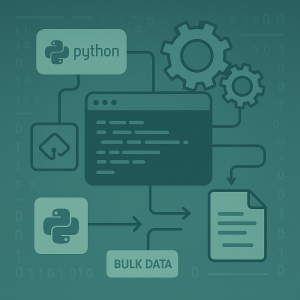
Top Automation & Scripting Tools
- Python
The dominant programming language for OSINT automation. Massive library ecosystem (requests, BeautifulSoup, Pandas, Scrapy, etc.) for scraping, parsing, analyzing, and automating every aspect of your workflow.
Why it’s great: Flexible, readable, and widely supported by OSINT frameworks.
Visit Python.org - Bash / Shell Scripting
Command-line scripting lets you quickly combine OSINT tools, automate file processing, and set up recurring jobs with tools likecronorat.
Why it’s great: Perfect for chaining tools like ripgrep, curl, and strings with a single command.
Learn about Bash - OSINT Frameworks (e.g., SpiderFoot, Recon-ng)
These platforms integrate dozens of OSINT modules, allowing for automated, multi-step investigations from one interface or script.
Why it’s great: Point-and-click or fully scriptable, with visualization and reporting built in.
Visit SpiderFoot | Recon-ng on GitHub - ripgrep (rg)
A lightning-fast grep alternative for searching through massive breach dumps, logs, or text exports—ideal for bulk email or password checks.
Why it’s great: Speed and flexibility for your local data, scriptable and private.
Visit ripgrep on GitHub - Make / Taskfile / Workflow Runners
Tools like Make or Taskfile can define, document, and run complex multi-tool workflows with a single command.
Why it’s great: Repeatable, shareable, and keeps your OSINT projects organized.
GNU Make | Taskfile
Pro Tip: Start small—automate repetitive searches, then scale up to full pipelines. Always document your scripts for repeatability and collaboration.
🗺️ Visualization & Mind Mapping
The most powerful OSINT investigations don’t just collect data—they turn complex relationships into clear, actionable intelligence. Visualization and mind mapping tools help you chart connections between people, accounts, assets, and events, making it easier to spot patterns, present findings, and collaborate with your team.
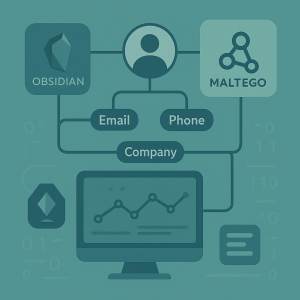
Top Visualization & Mind Mapping Tools
- Maltego
The industry gold standard for relationship mapping in OSINT. Maltego automates the discovery of links between people, organizations, domains, emails, and more—delivering beautiful, interactive network graphs.
Why it’s great: Drag-and-drop analysis, powerful transforms, and rich visuals for reporting.
Visit Maltego - Obsidian
A popular knowledge management tool among investigators. Obsidian supports markdown notes, backlinks, and visual “graph view” for mind mapping connections between findings.
Why it’s great: Free, local, highly customizable, and integrates with other research tools.
Visit Obsidian - draw.io / Diagrams.net
An open-source, web-based diagram tool for quickly mapping workflows, case timelines, and asset relationships.
Why it’s great: Fast, visual, and perfect for sharing diagrams in reports.
Visit draw.io / diagrams.net - Gephi
Advanced open-source graph visualization software. Ideal for analyzing and visualizing large, complex network data.
Why it’s great: Handles huge datasets, supports plugins, and delivers high-quality visuals.
Visit Gephi - Casefile
A simpler, offline alternative to Maltego for basic link analysis and mind mapping.
Why it’s great: Free, private, and great for small-to-medium-sized projects.
Learn about Casefile
Pro Tip: Mind mapping isn’t just for notes—use it to build timelines, track pivots, and visualize both findings and gaps in your research.
🏆 Recommended Tools & Standout Picks (2025 Edition)
With so many OSINT tools available—and new ones emerging each year—it’s easy to get overwhelmed. Here are our top recommendations for 2025, with a focus on tools that are field-tested, newly improved, or uniquely valuable for modern investigations. Each pick includes quick notes on strengths and limitations, so you can choose the right fit for your workflow.
-
People & Identity Search:
Sync.me (crowdsourced phone lookups, global reach), Truecaller (huge mobile database, fast lookup), Pipl (deep paid searches, best for corporate use)
Why? Still the fastest way to link phones, emails, and real names. Pipl’s API is updated for better privacy compliance in 2025.
Limitations: Sync.me/Truecaller can have outdated data; Pipl is commercial and may not be available for all users. -
Email Recon:
Holehe (now supports 150+ sites!), GHunt (improved Google data extraction), Toutatis (rising star for non-US platforms)
Why? Holehe’s bulk email checking is unmatched, GHunt now extracts more YouTube/Maps info.
Limitations: Some sites block automated checks; GHunt requires Google cookies. -
Social Media OSINT:
Maigret (new platform support in 2025), SpiderFoot (automates cross-platform checks), Social Analyzer (flexible for custom queries)
Why? Maigret covers the widest range of sites, SpiderFoot is great for automation.
Limitations: Profile detection is only as good as the username/email you provide. -
Breach & Leak Analysis:
Have I Been Pwned (public API), Dehashed (commercial with advanced search), ripgrep (blazing fast local search), RockYou2021 (still the password go-to)
Why? HIBP is more up-to-date than ever; Dehashed now supports API alerting.
Limitations: Commercial options require accounts; local searching means you need space for big dumps. -
Web Recon:
Caido (fast, modern alternative to Burp), OWASP ZAP (open source, actively developed), Burp Suite (professional gold standard)
Why? Caido now supports automation and scripting; ZAP’s plugin ecosystem keeps growing.
Limitations: Some tools require setup and tuning to avoid missing assets. -
Infrastructure & Domain Recon:
SecurityTrails (domain history, API), Amass (open source, automated discovery), WHOISXMLAPI (broad domain data), crt.sh (certificate search)
Why? SecurityTrails and Amass both support bulk recon and integrations.
Limitations: Some advanced features require paid plans. -
Network Recon:
Wigle (open Wi-Fi database), Shodan (search IoT & exposed services), Censys (new scan APIs, SSL cert data)
Why? Shodan and Censys now offer better filtering and alerts.
Limitations: Deep use may require a paid account. -
File, Image & Metadata Analysis:
ExifTool (batch EXIF extraction), Metadata2Go (fast web checks), FotoForensics (image analysis)
Why? ExifTool’s new modules support more file types in 2025.
Limitations: Web tools require you to upload files (beware privacy). -
Automation & Scripting:
Python (best for custom OSINT pipelines), SpiderFoot (integrates multiple tools), Bash & ripgrep (fast local automation), Make/Taskfile (organize workflows)
Why? Python now supports more async OSINT libraries; SpiderFoot’s updates make it even more scriptable.
Limitations: Custom scripting requires some coding skills. -
Visualization & Mind Mapping:
Maltego (deep link analysis), Obsidian (markdown mind maps, graph view), draw.io (diagramming), Gephi (network graphing)
Why? Maltego and Obsidian both saw major usability upgrades for 2025.
Limitations: Maltego can be resource intensive; Gephi has a learning curve.
Pro Tip: Mix and match tools in each category to cover blind spots—no single app is perfect, but the right combo makes you unstoppable!
🔎 Sample Workflows & Real-World Scenarios
Example 1: Tracking a Person Across Platforms
- Start with a Phone Number or Email: Use Sync.me, Truecaller, or Holehe to identify a real name and possible username.
- Expand with Username Search: Run Maigret or SpiderFoot to discover linked accounts on hundreds of social media and web platforms.
- Map Connections & Content: Review discovered profiles for public posts, photos, and connections using archive.ph or Browsertrix Crawler to save evidence.
- Visualize Relationships: Use Maltego or Obsidian to build a mind map of accounts, contacts, and content over time.
Example 2: Breach-Driven Investigation
- Initial Exposure Check: Use Have I Been Pwned or Dehashed to see if a target email or username is present in known breaches.
- Local Breach Mining: Run ripgrep on your downloaded breach dumps to search for further exposures—usernames, passwords, or other personal data.
- Credential Stuffing & Pivoting: Try discovered passwords or usernames in Holehe or GHunt to check for re-use on other platforms or Google services.
- Infrastructure Tie-Back: Use SecurityTrails or Amass to see if any breach data links to owned domains or company infrastructure.
Example 3: Automation & Visualization for Reporting
- Automate Collection: Build a Python or Bash script that queries multiple OSINT APIs, checks local breach dumps, and archives web content.
- Bulk Processing: Use SpiderFoot or Recon-ng to automate dozens of searches for emails, domains, and social profiles.
- Visualization: Export results into Obsidian for mind mapping or draw.io for building visual timelines and relationship graphs.
- Reporting: Compile annotated screenshots, evidence, and mind maps into a professional report or timeline.
Pro Tip: Every workflow can be adapted to your own style—combine steps, swap tools, and don’t be afraid to experiment!
Corporate Infrastructure Mapping & Threat Surface Analysis
- Enumerate Corporate Domains: Use SecurityTrails, WHOISXMLAPI
- Subdomain & Certificate Mining: Use Amass, crt.sh
- Fingerprint Services: Use Shodan, Censys
- Cross-Reference Leaks: Check HIBP, Dehashed for credential exposures
- Document & Visualize: Map findings in Maltego, draw.io
Customize for your organization: Add internal sources, proprietary tools, or workflow automations as needed.
Tracking Disinformation & Inauthentic Behavior
- Seed with Known Handles/Hashtags: Use SpiderFoot, Maigret
- Archive & Analyze Content: Use archive.ph, Browsertrix Crawler, Obsidian
- Metadata & Timing Analysis: Use ExifTool, FotoForensics
- Network Analysis: Use Maltego, Gephi
- Pivot & Expand: Apply findings to discover new nodes/accounts
Customize: Integrate social listening, language analysis, or OSINT automation scripts.
Full-Spectrum Due Diligence & Insider Threat Investigation
- Collect Identity Anchors: Gather emails, phone numbers, aliases
- Deep Social & Breach Checks: Use Holehe, GHunt, Maigret, HIBP
- Asset & Infrastructure Mapping: Use SecurityTrails, Amass, Shodan
- File & Metadata Analysis: Use ExifTool, Metadata2Go, strings
- Automated Timeline & Reporting: Build mind maps in Obsidian, draw.io, or Maltego
Customize: Add legal review, background screening, or continuous monitoring steps.
⚖️ Legal, Ethical, & Privacy Guidance for OSINT Investigators
Open-source intelligence is powerful—but with power comes responsibility. Before you dive in, it’s crucial to understand what’s legal, ethical, and safe when conducting OSINT investigations.
- Know the Law: Laws vary by country and region. Stick to data that’s publicly available or intentionally published online. Avoid unauthorized access (hacking, scraping behind logins, social engineering, etc.), which may violate computer crime laws.
- Respect Platform Terms: Many platforms prohibit automated scraping, data mining, or using their data for surveillance. Violating terms of service can lead to account bans or legal action—even if the data is public.
- Handle Personal Data with Care: Just because you can access something doesn’t mean you should. Always minimize collection, use, and sharing of personally identifiable information (PII). When in doubt, anonymize or redact sensitive data in your reports.
- Stay Ethical: Avoid researching or exposing private citizens without cause. Do not harass, dox, or publish information that could cause harm.
- Protect Yourself: Use a VPN, privacy browsers, and strong operational security (OPSEC) habits. Never use your personal accounts or identifiers during investigations.
- Get Proper Authorization: For professional, academic, or penetration testing work, always have written permission from stakeholders or legal counsel. Never research targets outside your authorized scope.
- Document Everything: Keep logs of your research steps and data sources, in case you ever need to prove your work was ethical and legal.
Remember: OSINT is most valuable—and safest—when it’s used to protect, inform, and investigate in the public interest.
🔄 How to Stay Current: OSINT Tools & Community
The OSINT landscape evolves quickly—new tools appear, old favorites improve, and the tactics of both attackers and defenders change every year. Staying current is essential for success. Here’s where to find the latest updates, fresh techniques, and expert advice:
- GitHub: Track trending OSINT repositories and stars. Use the OSINT topic page to discover new projects.
-
Twitter/X: Follow OSINT experts and hashtags (
#osint,#infosec,#cybersecurity). Many tool creators post new releases and workflow tips here first. - Reddit: Join r/OSINT for community discussions, tool news, and real-world use cases.
- Discord & Telegram: Many OSINT communities host live chats and share scripts, links, and news. Look for invite links on GitHub and Reddit.
- Newsletters: Subscribe to trusted newsletters like OSINTCurious, Week in OSINT, and Micah Hoffman’s for weekly digests and workflow ideas.
- Blogs: Stay on top of new tactics and case studies with blogs like OSINTCurio.us, Sector035, Bellingcat, and Nixintel.
- Conferences & Workshops: Attend (or view recordings from) events like OSINTCon, OSINTCurious Live, and local security meetups to hear from tool creators and power users.
Pro Tip: Build your own “watch list” of tools on GitHub and set up alerts so you never miss an update or a trending project.
🏁 Conclusion & Call-to-Action
The world of OSINT is always evolving. New tools, fresh techniques, and shifting privacy laws mean there’s always more to learn. The most effective investigators are those who stay curious, adapt quickly, and use their skills responsibly—always respecting legal and ethical boundaries.
Whether you’re just building your first toolkit or refining a mature workflow, continuous learning is the key to success. Experiment with new tools, participate in the community, and never stop honing your craft.
What about you? What are your favorite OSINT tools, resources, or workflows? Drop your recommendations, questions, or real-world stories in the comments below. Let’s build a smarter, safer OSINT community together!

You must be logged in to post a comment.